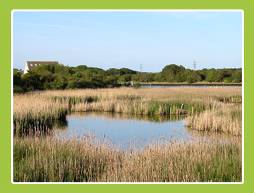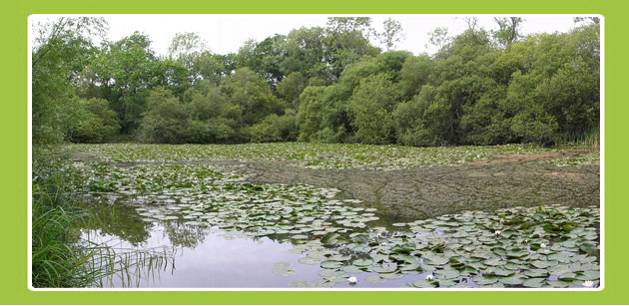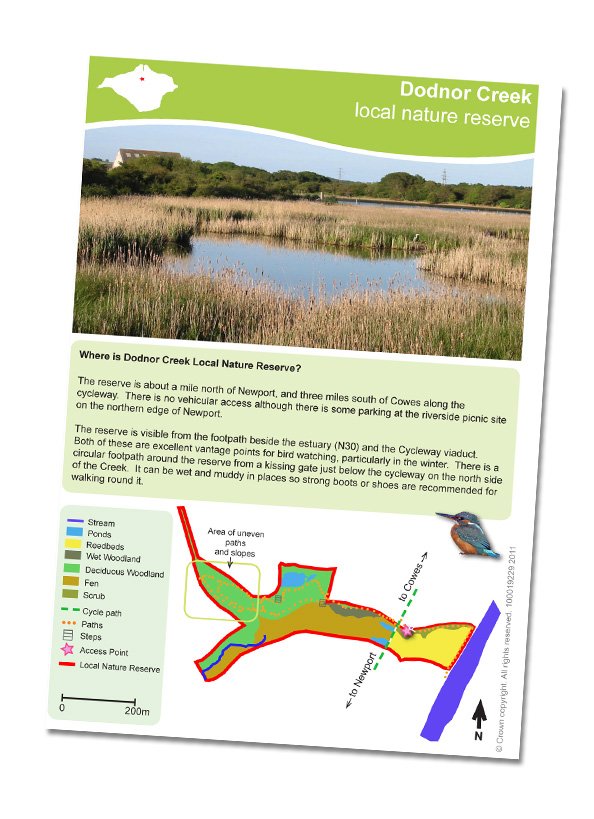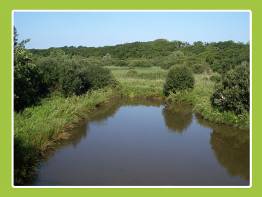DODNOR CREEK AND DICKSONS COPSE
Where is Dodnor Creek and Dicksons Copse?
| The reserve is about a mile north of Newport, and three miles south of Cowes along the cycleway. There is no vehicular access although there is some parking at the riverside picnic site on the northern edge of Newport. The reserve is visible from the footpath beside the estuary (N30) and the Cycleway viaduct. Both of these are excellent vantage points for bird watching, particularly in the winter. There is a circular footpath around the reserve from a kissing gate just below the cycleway on the north side of the Creek. It can be wet and muddy in places so strong boots or shoes are recommended for walking round it. |
Why is the site so special?
| The old millpond, fringed by willow scrub and reed beds, is home to many species of bird. Mallard, coot and swans are regularly seen nesting there. Swallows and swifts swoop and soar over the water catching insects in midsummer. In the autumn and winter, the squeaky call of the water rail can be heard in the reedbeds, and if you are lucky you will see the flash of azure wings as kingfishers dart over the creek. |  |
| The area is part of a Site of Special Scientific Interest, which stretches along the Medina from the outskirts of Newport to Cowes Harbour. Over the winter, it is host to many migratory birds who spend time feeding on the rich resources in the estuary mud. |
| The copse is located on the eastern side of the nature reserve and is typically made up of Ash, Oak, Field Maple with a rich understorey of more shrubby trees including of Hazel, Spindle and crab apple. Part of Dicksons Copse is ancient woodland and contains 28 species of plants which help us identify it as such. These include the nationally rare narrow-leaved lungwort and the soft-shield and polypody ferns. The woodland supports a wide variety of mammals including red squirrels dormice and bats. |
| In spring, flowers such as primroses, bugle and narrow leaved lungwort are found on the woodland floor. In summer, white water lilies make a fine show on the pond – best seen in June. Many dragonfly and damselfly species have been recorded here and there are speckled wood butterflies in the glades. |  |
| You can download a Dodnor Creek and Dicksons Copse factsheet here which contains a map of the site and things to look out for during your visit. Click here if you would like to find out more about getting involved with your local nature reserve. |  |
Page last updated on: 24/03/2011






